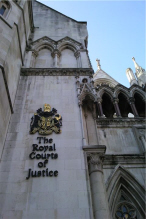Tied up in knots
- Details
 Japanese knotweed is an invasive problem - and legal minefield - for local authorities and other large landowners in the public sector, writes Chris Moss.
Japanese knotweed is an invasive problem - and legal minefield - for local authorities and other large landowners in the public sector, writes Chris Moss.
There is no doubt that the case of Network Rail Infrastructure Ltd v Williams [2018] EWCA Civ 1514 creates a headache for local authorities and large land owners. The decision will spark an increase in claims as private residential property owners (and potentially commercial land owners) seek redress for the blight of Japanese knotweed on their land.
The case was also an important precedent in the law of nuisance. Etherton MR gave a useful summary of the principles of nuisance and they are worth setting out as follows (from para 40 of the judgment onwards):
- Private nuisance is a violation of real property rights (for example interference with the legal rights of the owner of land or interference with the amenity of the land which is an inherent facet of a right to exclusive possession);
- Secondly, although nuisance is often broken down into categories (encroachment, direct physical injury and interference with quiet enjoyment), these are simply examples of a violation of property rights;
- Thirdly, physical damage is not necessary for an interference to be actionable (he described this as “the old form of action”) as damages may be awarded for the loss of the land’s intangible amenity value;
- Fourthly, nuisance may be caused by inaction or omission as well as by some positive activity. An occupier would be liable if they failed to use reasonable means to bring a nuisance to an end where there is actual or presumed knowledge of it and ample time to do so. They would also be liable if they if they failed to take reasonable action to remove a hazard on their land of which they were aware and where there was a foreseeable risk that it would damage a neighbour’s land and did go on to damage it.
- Fifthly, the broad unifying principle in respect of the law on nuisance is reasonableness between neighbours.
The Court of Appeal stated that the presence of Japanese knotweed, in fact the mere presence of its rhizomes (established by way of expert evidence), imposes an immediate burden on a land owner in that it makes it more difficult and more expensive for the landowner to develop the land, should they wish to do so. The knotweed and its rhizomes, he said, represent a “natural hazard”, they affect the landowner’s ability fully to use and enjoy their land, and they interfere with its amenity value.
However, it should be noted that in this case, Network Rail had factual knowledge of the knotweed upon its land that it had failed to reasonably to prevent its spread as such that it had failed to prevent the interference with the claimant’s enjoyment of their properties which was sufficient to give rise to a cause of action in nuisance.
The Court of Appeal indicated that there was no reason why final mandatory injunctions could not be ordered in this case. The amenity value of the land was diminished by the presence of roots even though no actual damage had developed.
An increase in claims
There is no doubt that Network Rail v Williams will result in many more land owners seeking to claim injunctions and damages from local authorities, housing trusts and other large land owners. Local authorities will have to be more pro-active in eradicating knotweed upon their land particularly in populous areas. This may involve an overarching review of the processes of maintaining properties that they own.
There is the potential to distinguish Network Rail v Williams from other cases on the facts dependent upon the circumstances of each case. However, I recommend taking advice urgently and ensuring there is a quick assessment of causation and the potential liability of the land owner before the litigation process and associated costs become a bar to settlement. Expert evidence will also be relevant to the decision-making process. Beware knotweed experts! Some within the field are not up to the required standards of practice and are not well versed in supplying complaint CPR reports.
This case also establishes that any interference (such as difficult to eradicate plants, noxious substances, dust and debris and other nuisances) can give rise to an actionable claim, even if they are yet to cause physical damage to a landowner’s property, as long as the amenity value of the land has been diminished. Valuation evidence would no doubt be needed by a potential claimant.
This case opens the door to claimants in terms of bringing successful claims for the amenity damage caused by knotweed or other invasive nuisance.
However, it should also mean that the certainty makes it clearer for local authorities to assess their risk and settle the claim early if necessary. Early and thorough expert advice is recommended so a strategy and decision can be made early in the process of a claim to avoid protracted and complicated litigation. If local authorities or housing trusts are aware of a knotweed problem upon their land they should be taking action now to manage and eradicate it before this area of litigation takes off.
Christopher Moss is a barrister at St John's Buildings. He specialises in land law, nuisance and trespass cases and regularly advises local authorities in relation issues such as knotweed.
For further information please contact Chris’ clerks on 1061 214 1500 or email
Sponsored articles
Walker Morris supports Tower Hamlets Council in first known Remediation Contribution Order application issued by local authority
Unlocking legal talent
Lawyer (Planning and Regulatory)
Legal Director - Government and Public Sector
Contracts Lawyer
Locums
Poll













































